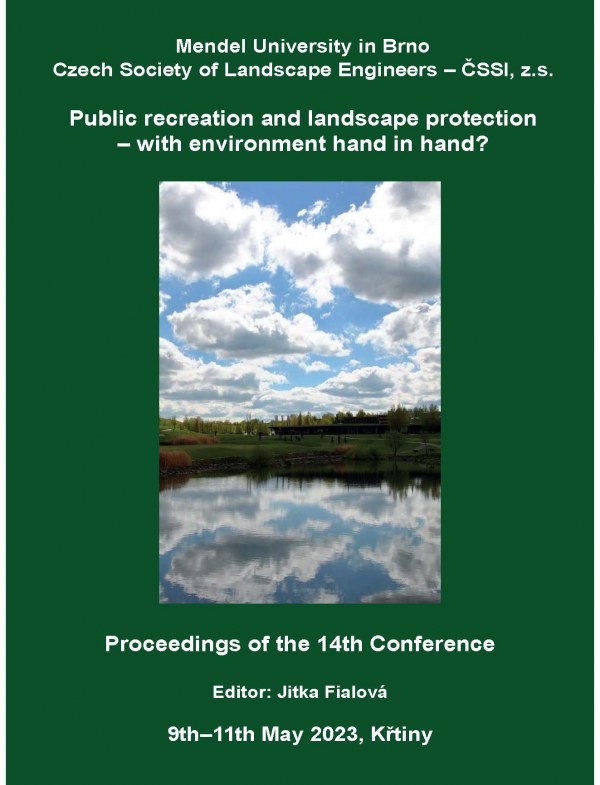
DOI: 10.11118/978-80-7509-904-4-0258
RISK ASSESSMENT ON GEODIVERSITY SITES
- Lucie Kubalíková, Eva Nováková, František Kuda, Karel Kirchner, Aleš Bajer, Marie Balková
Geoconservation is an action of conserving and enhancing geological, geomorphological, hydrological and soil features and processes. Particular geoconservation measures are very often applied on the site-level to protect important geodiversity sites. Nevertheless, despite established legal protection and related geoconservation activities, threats to geodiversity sites related to the multiple use and human society demands can arise and reaching a compromise can be difficult. In this contribution, a two-level threat assessment is applied and discussed. The first level of threat assessment is based on the already used criteria within geosite/geomorphosite concept. The second level of threat assessment is represented by Risk Assessment Matrix, which may be considered a useful tool providing a complex view on the threats to geodiversity sites. The methods are applied on two different sites and their advantages and limits are discussed. Based on the assessment, specific management proposals may be implemented in order to balance conservation needs and demands resulting from human activities related to the sites.
Keywords: geoconservation, risk assessment matrix, degradation risk, geosites, geomorphosites
pages: 258-262, Published: 2023, online: 2023
References
- AOPK - Nature Conservation Agency of the Czech Republic (2022). Plán péče o přírodní památku Rudice - Seč na období 2022-2032. AOPK ČR.
- Crofts, R., Gordon, J. E., Brilha, J., Gray, M., Gunn, J., Larwood, J., Santucci, V. L., Tormey, D., Worboys, G. L. (2020) Guidelines for geoconservation in protected and conserved areas. Best Practice Protected Area Guidelines Series No. 31. Gland, Switzerland: IUCN. DOI: https://doi.org/10.2305/IUCN.CH.2020.PAG.31.en
 Go to original source...
Go to original source... - Czech Geological Survey. (2023) Significant geological localities of the Czech Republic [online]. Available at: http://lokality.geology.cz. [Accessed: 26th March 2023].
- Fuertes-Gutiérrez, I., García-Ortiz, E., Fernández-Martínez, E. (2016). Anthropic Threats to Geological Heritage: Characterization and Management: A Case Study in the Dinosaur Tracksites of La Rioja (Spain). Geoheritage, 8, 135-153. DOI: https://doi.org/10.1007/s12371-015-0142-3
 Go to original source...
Go to original source... - García-Ortiz, E., Fuertes-Gutiérrez, I., Fernández-Martínez, E. (2014). Concepts and terminology for the risk of degradation of geological heritage sites: fragility and natural vulnerability, a case study. Proc. Geol. Assoc., 125:463-479. DOI: 10.1016/j.pgeola.2014.06.003
 Go to original source...
Go to original source... - Gray, M. (2013). Geodiversity: Valuing and Conserving Abiotic Nature. Second Edition. Chichester: Wiley-Blackwell.
- Kubalíková, L., Balková, M. (2023). Two-level assessment of threats to geodiversity and geoheritage: A case study from Hády quarries (Brno, Czech Republic), Environmental Impact Assessment Review, 99, 107024. DOI: https://doi.org/10.1016/j.eiar.2022.107024
 Go to original source...
Go to original source... - Nováková, E., Kuda, F., Kubalíková, L. (2018). Tourist interest in illicit zone of Ice Caves. In: Public recreation and landscape protection - with nature hand in hand! Conference proceeding, Mendel University in Brno, pp 408-413.
- Reiterová, L. (ed.). (2022). Zásady péče o Národní park Podyjí a jeho ochranné pásmo. Správa Národního parku Podyjí, Znojmo.
- Selmi, L., Canesin, T. S., Gauci, R., Pereira, P., Coratza, P. (2022). Degradation Risk Assessment: Understanding the Impacts of Climate Change on Geoheritage. Sustainability, 14(7), 4262. DOI: https://doi.org/10.3390/su14074262
 Go to original source...
Go to original source...


